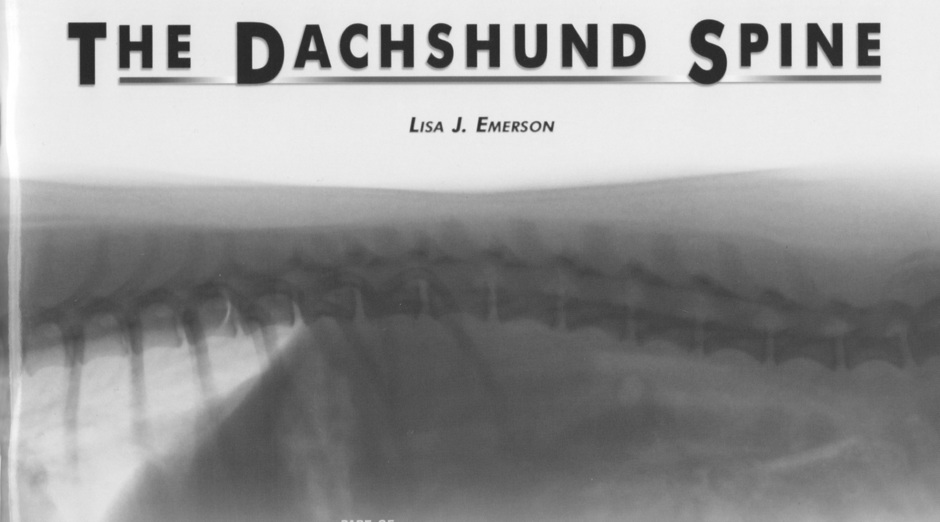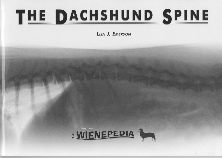
The Dachshund Spine - book review
Lisa Emerson's book "The Dachshund Spine" was first published in 2011 and is described as "a must-have" for all owners and breeders of Dachshunds. It's also aimed at vets and those interested in the other pedigree breeds where back disease is a common problem (e.g. Basset Hounds, Corgis and Pekingese, among others).
Lisa's publicity for the book says: “Covered in this book is the anatomy of their spine, the degeneration leading to calcification that noticeably affects many of those dogs and around 1 out of every 2 dachshunds, what can be done to ameliorate the degenerative process, how to handle a disc herniation (including the latest medications and what medications not to give, especially if surgery might be needed), how to test for severe degeneration, how to breed away from it, and how to choose reputable breeders and healthier dogs when buying.”
Overall, this is one of the most comprehensive texts on the subject, bringing together evidence from a vast array of research papers (fully referenced). The other text that takes a similar approach is Patricia J. Luttgen's Canine Intervertebral Disc Disease booklet, written for the Dachshund Club of America and published in 1993 [http://www.dachshund-dca.org/discbook.html]. This latter text was essential reading in its day, but the science has moved on and is brought fully up-to-date by Lisa.
Probably the most significant paragraph, is as follows:
"The latest genetic data, however, indicates that Hypochondroplasia (HCP) may not be a major, or potentially, even a minor factor in the development of Hansen Type 1 IVDD (IVDD-1), as the FGF4-R insertion does not exist with any frequency in beagles, cocker spaniels, french bulldogs, or poodles, all of which often experience the same kind of IVDD that dachshunds do, and also because of IVDD-1's high familial heritability in certain HCP dogs and its apparent absence in others. If it is true that HCP is not necessary to induce IVDD-1, then it's good news that it should be possible to produce HCP dogs without IVDD-1 while retaining the shortened legs, once the degenerative mutations have been identified.”
This is consistent with our Breed Council Health Sub-committee's thinking that focusing our IVDD research on the genetics of the condition is an important aspect of finding a way to reduce the prevalence of the problem. However, that is likely to be a long-term prospect, so x-ray screening is now considered to be the most useful currently available option to reduce the prevalence of IVDD in the UK.
Lisa Emerson should be commended for the huge amount of work she has clearly put into researching back disease for this book.
You can order a copy of The Dachshund Spine, by Lisa J Emerson here.


